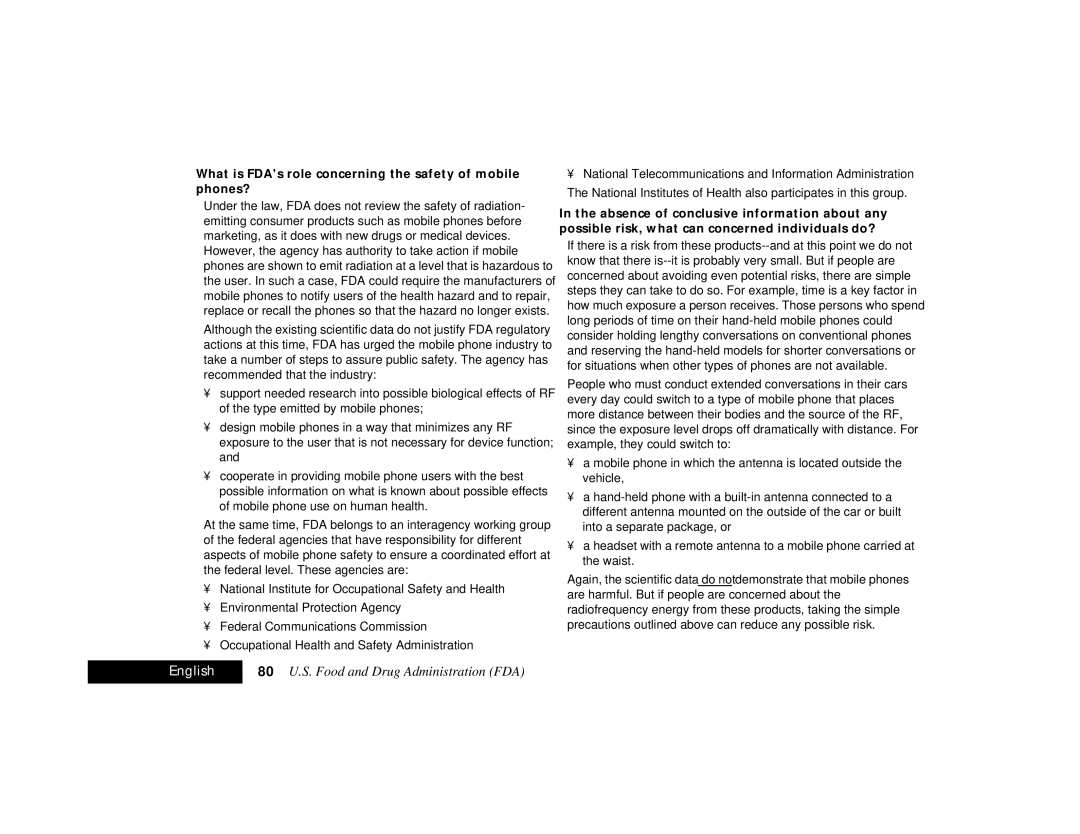What is FDA's role concerning the safety of mobile phones?
Under the law, FDA does not review the safety of radiation- emitting consumer products such as mobile phones before marketing, as it does with new drugs or medical devices.
However, the agency has authority to take action if mobile phones are shown to emit radiation at a level that is hazardous to the user. In such a case, FDA could require the manufacturers of mobile phones to notify users of the health hazard and to repair, replace or recall the phones so that the hazard no longer exists.
Although the existing scientific data do not justify FDA regulatory actions at this time, FDA has urged the mobile phone industry to take a number of steps to assure public safety. The agency has recommended that the industry:
•support needed research into possible biological effects of RF of the type emitted by mobile phones;
•design mobile phones in a way that minimizes any RF exposure to the user that is not necessary for device function; and
•cooperate in providing mobile phone users with the best possible information on what is known about possible effects of mobile phone use on human health.
At the same time, FDA belongs to an interagency working group of the federal agencies that have responsibility for different aspects of mobile phone safety to ensure a coordinated effort at the federal level. These agencies are:
•National Institute for Occupational Safety and Health
•Environmental Protection Agency
•Federal Communications Commission
•Occupational Health and Safety Administration
•National Telecommunications and Information Administration The National Institutes of Health also participates in this group.
In the absence of conclusive information about any possible risk, what can concerned individuals do?
If there is a risk from these
People who must conduct extended conversations in their cars every day could switch to a type of mobile phone that places more distance between their bodies and the source of the RF, since the exposure level drops off dramatically with distance. For example, they could switch to:
•a mobile phone in which the antenna is located outside the vehicle,
•a
•a headset with a remote antenna to a mobile phone carried at the waist.
Again, the scientific data do not demonstrate that mobile phones are harmful. But if people are concerned about the radiofrequency energy from these products, taking the simple precautions outlined above can reduce any possible risk.
English | 80 U.S. Food and Drug Administration (FDA) |
|
|
